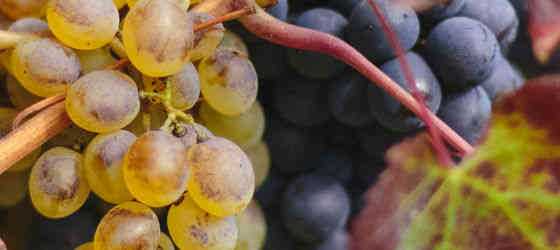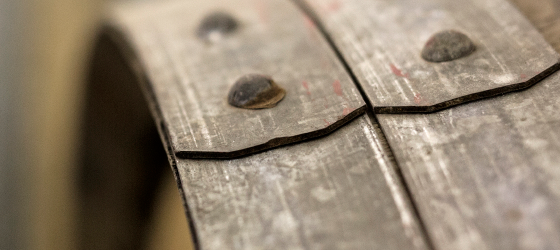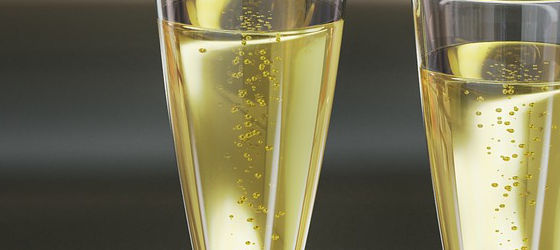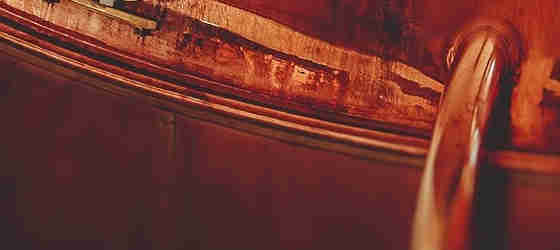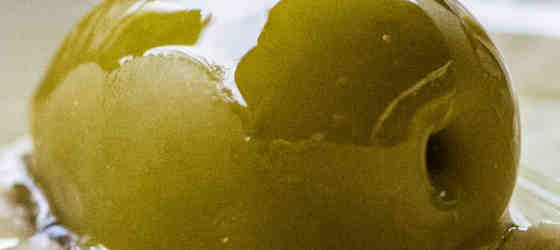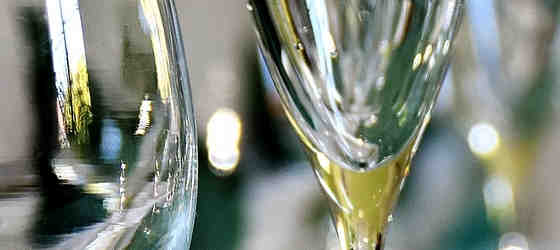19/05/2019
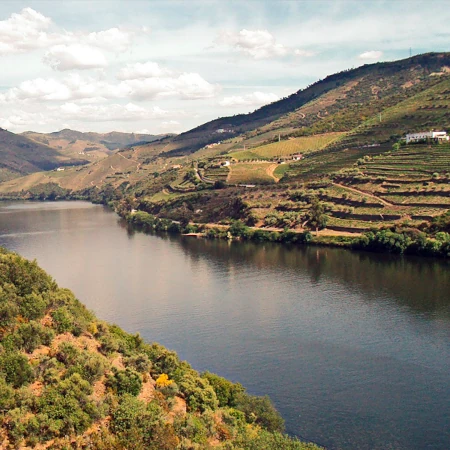
Douro - the river
The cradle of port wine lies along the Rio Douro and its tributaries in north-east Portugal. The river (Spanish: Duero), which originates in Spain, flows through Portugal from east to west and flows out in the Atlantic ocean at Porto.
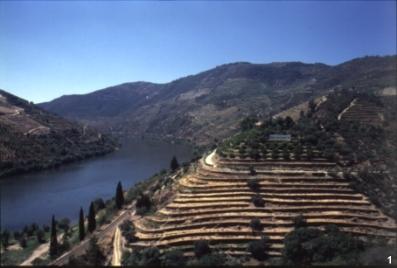
Region
Climate
Cadastre
Benefício and points system
The demarcation
After it was decided in 1756 to demarcate the area for the ‘navigable’ wines and to create a enrolment register (Geschichte - Companhia und Marquês de Pombal),
After the resignation of Pombal (1777), the regulations that had only recently been established were increasingly watered down. The demarcation was extended further and further as a result of growing demand - but the quality of the new sites was insufficiently recognised. As early as 1801, the demarcated area had roughly doubled. Over the course of the 19th century, the situation became increasingly chaotic (dissolution of the Companhia, etc.). The overproduction of port wine was only reduced by the major epidemics - in particular phylloxera, which first appeared in the Douro in 1868.
In order to finally protect the name Porto under commercial law, João Franco redefined the Região Demarcada (Demarcated Region) in 1907. One year later, it was revised once again and reduced in size. The last corrections were then made in 1921 - this version of the demarcation is still valid today. It covers an area of around 250,000 hectares, in which less than 15% is planted with vines.
The municipalities within the demarcated area are listed individually and belong to the districts of Vila Real, Bragança, Viseu and Guarda.
The region
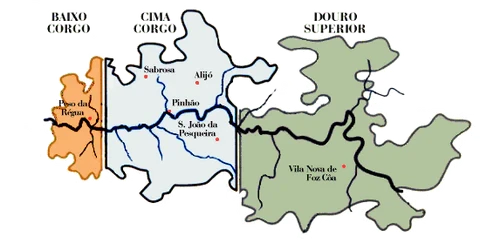
Officially, the growing area is divided into three regions:
Baixo Corgo,
lower Corgo, is the smallest region. It describes the area around the Rio Corgo and the town of Peso da Régua. Wine is grown in about a third of the area, and that means that almost half of all the vineyards in the Douro region are located here. The wines are lighter and are used by many producers for ports to be drunk young (simple tawnies etc.).
Cima Corgo, Upper Corgo, is as good as twice the size of Baixo Corgo. In the heart of the region lies the small town of Pinhão, where the river with the same name flows into the Douro river. Here is less than 15% of the area planted with vines, which accounts for around two-fifths of the total vine-planted area. The wines produced are considered the most ultimate in the Douro region and form an essential basis for (almost) all renowned vintage ports. Some of the names of the quintas along the Douro in this region - Malvedos (Graham's), Roêda (Croft), Bomfim (Silva & Cosens/Dow's), La Rosa etc. - or in the Pinhão Valley - Santo António (Fonseca), Noval, Terra Feita (Taylor's) etc. - information on who's who of port wine.
Douro Superior,
the upper or outermost Douro, is the largest of the regions. It stretches eastwards from S. João da Pesqueira to the Spanish border. Due to the increasingly unfavorable conditions upstream, less than one twentieth of the area is planted with vines. However, some of the great port wines are also grown here: estates such as Quinta da Ervamoira (Ramos-Pinto) on the Rio Côa or the famous Quinta das Vargellas (Taylor's) and Quinta de Vesúvio (Symington Group) on the banks of the Douro are located in this region.
The climate
From Porto upstream along the Douro, two mighty mountains rise just around 30 kilometres before Peso da Regua: the Serra do Marão (1,415 m) to the north of the river and the Serra de Montemuro (1,382 m) to the south. Together they protect the Douro region from cool Atlantic winds, and a lot of moisture also rains down before them.
The climate is therefore relatively dry with higher temperatures. Following the Douro further upstream, rainfall decreases (1,000-400 mm/year), while temperatures increase in the opposite direction. The same is also the case as you move further away from the Douro, following the tributary valleys upstream.
The cadastre
A register was drawn up in 1937-45 for the new wine-growing area, which was demarcated in 1921. The 84,000 plots of land belonging to the 30,000 registered winegrowers were gradually recorded by inspection teams consisting of an agronomist, a senior farmer, a vine classifier and an enumerator. The following information was collected:
- | Location of the vineyard (district, municipality, town) |
- | Name and address of the owner, tenant or partner |
- | the previous owner |
- | Borders |
- | slopes and watercourses |
- | Soil conditions |
- | Inclination of the terrain |
- | height |
- | Spacing of the vines, height of the trellis, pergolas |
- | planted area, with details of the areas kept free for future planting |
- | Condition of the vineyard |
- | Cultivation aspects of the site |
- | Intercropping |
- | state of habitation |
- | cultivated vines |
- | predominant varieties |
- | Percentage of failure |
- | Further information |
|
|
Source: Instituto do Vinho do Porto (IVP)
The Benefício and the point system
The term Benefício refers on the one hand to vinification – That means stopping fermentation by adding wine distillate - and on the other to the quantity of wine that can be made into port wine, as determined by the Port Wine Institute (Instituto do Vinho do Porto - IVP). Every year, the IVP determines the quantity of wine to which the Benefício is awarded, depending on the market situation, existing stocks and future prospects. For example, there are years in which far less than half of the entire Douro wine harvest is made into port, but there are also years (such as 1998) in which the proportion is more than 80% with a small harvest.
(Today (2019), it should be noted that the allocation of port quantities is becoming less and less important, as the majority of producers are increasingly focussing on Douro DOC wines instead of port).
The Casa do Douro in Régua is responsible for distributing this fixed quantity to the individual wineries. A points system was set up in 1947/48 on the basis of the cadastre in order to be able to carry this out according to the highest possible quality criteria. According to this system, a point value is calculated for each vineyard based on twelve criteria. This assigns each property to one of six classes, labelled with the letters A to F, which then determines the share of the Benefício.
The criteria for the score is made after following categories:
Altitude
The altitude of the vineyard, which is important for the climate, is assigned between 150 plus points (150 meters) and 900 minus points (over 650 meters).
Productivity
The production of the vineyard is reassessed every 5 years. The score ranges from plus 120 points - for vineyards with a production of less than 600 liters per 1,000 vines - to minus 900 points for more than 1,800 liters.
Soil
Between 100 plus and 600 minus points are awarded for soil quality. Pure slate soil receives the highest score, which decreases with increasing granite and is lowest for fertile soils.
Location
To assess the location, the area is divided into five sections, which are then divided into a series of sectors. The scores increase upstream along the Douro until a Mediterranean climate prevails. In the fifth, easternmost section, the scores are somewhat lower again. Overall, the range extends from fifty minus to six hundred plus points.
Vine training
Vine training is worth between five hundred minus points - if grown in arbours - and one hundred plus points - if grown in low hedges.
Grape varieties
The vines listed in the register are rated from -300 to +150 points.
Slope
In accordance with the more favorable conditions on the slope - such as more intensive sunlight and infertile soil - one hundred points are deducted on the plain and up to one hundred points are added for a steep slope.
Exposure
The influence of the exposure is considered in relation to the section (see also location). The rating ranges from -30 points for a northern exposure in the first, most westerly section to 100 plus points for a southern exposure in the fourth, second most easterly section.
Distance between the vines
Based on an optimum stock of 5,700 to 6,900 vines per hectare, vineyards above this range are deducted fifty points and vineyards with less than 5,700 vines are added fifty points.
Stoniness of the soil
Very stony soils are awarded up to 80 points. Soils that are not very stony or not stony at all receive no points.
Age of the vines
The age of the vines is assessed as follows: no points for vines less than five years old, 30 points for vines between five and twenty-five years old and 70 points for all older vines.
Protection
A vineyard that is very sheltered - especially from cold winds - receives 60 points, a sheltered vineyard 30 points and a vineyard with little or no shelter receives no points.
Table of points criteria
Criteria | Requirement (min/max) | min. points | max. points | p.-range | % (ca.) |
Altitute (m) | >650 / <150 | -900 | 150 | 1050 | 20.6 |
Productivity (l/1000 vins) | >1800 / <600 | -900 | 120 | 1020 | 20.0 |
Soil | fertile / granit / schist | -600 | 100 | 700 | 13.7 |
Location | by sections and sectors | -50 | 600 | 650 | 12.7 |
Vine training | pergolas / hedges | -500 | 100 | 600 | 11.8 |
Grape varieties | by catastre | -300 | 150 | 450 | 8.8 |
Slope | flat / steep | -100 | 100 | 200 | 3.9 |
Exposure | differentiated by sections | -30 | 100 | 130 | 2.5 |
Distance (vins/ha) | >6,900 / <5,700 | -50 | 50 | 100 | 1.9 |
Stoniness | little / very | 0 | 80 | 80 | 1.6 |
Age (years) | <5 / 5-25 / >25 | 0 | 70 | 70 | 1.3 |
Protection | little / very | 0 | 60 | 60 | 1.2 |
Totals |
| -3430 | 1680 | 5110 | 100.0 |
Source: Instituto do Vinho do Porto (IVP)
Based on the points value calculated according to the above criteria, each property is assigned to a class, according to which the share of the Benefício is ultimately determined. The classes are divided as follows:
class A | > 1,200 points |
class B | 1,001 - 1,200 points |
class C | 801 - 1,000 points |
class D | 601 - 800 points |
class E | 401 - 600 points |
class F | 201 - 400 points |





